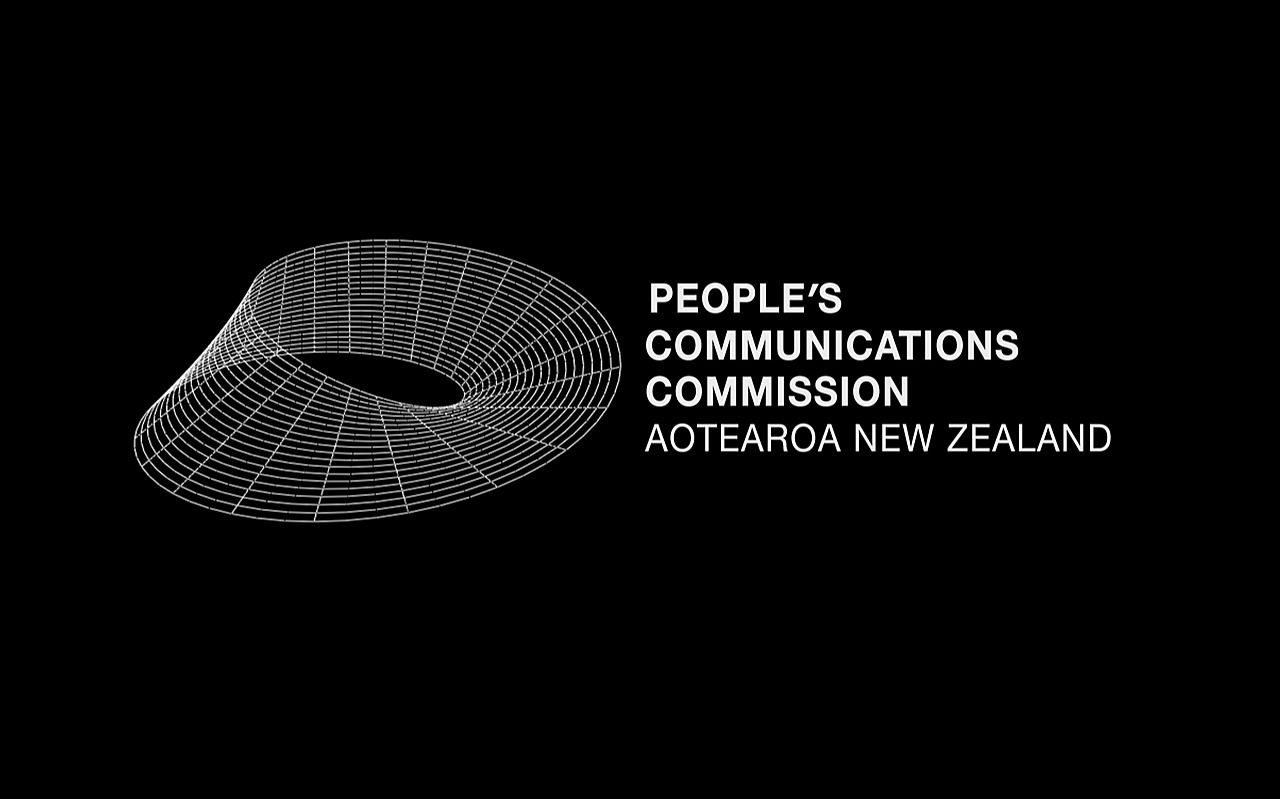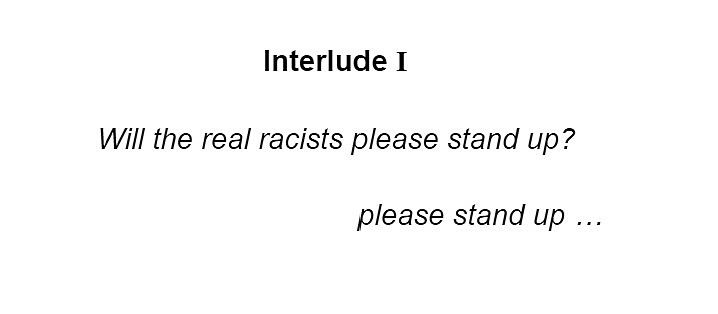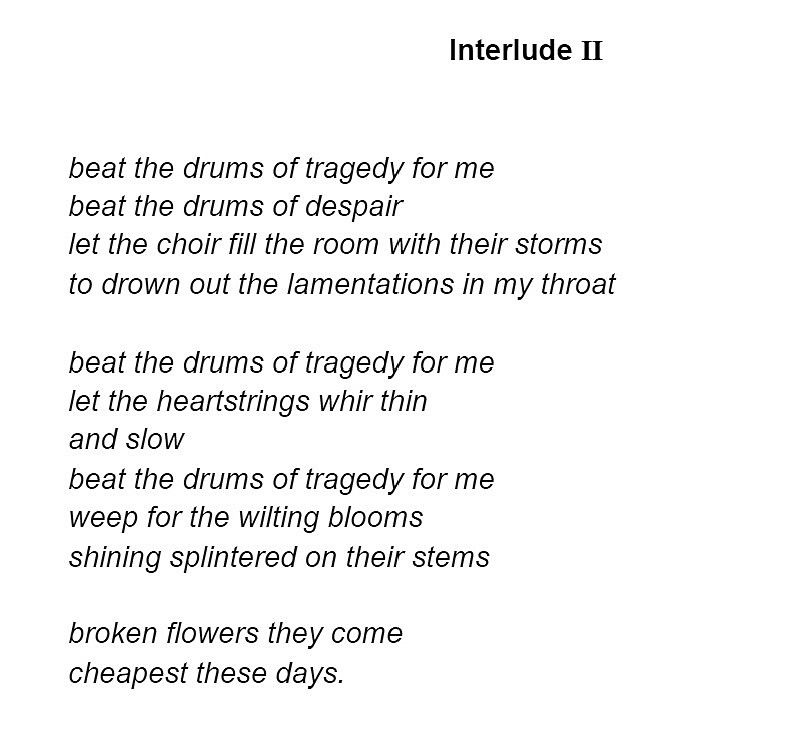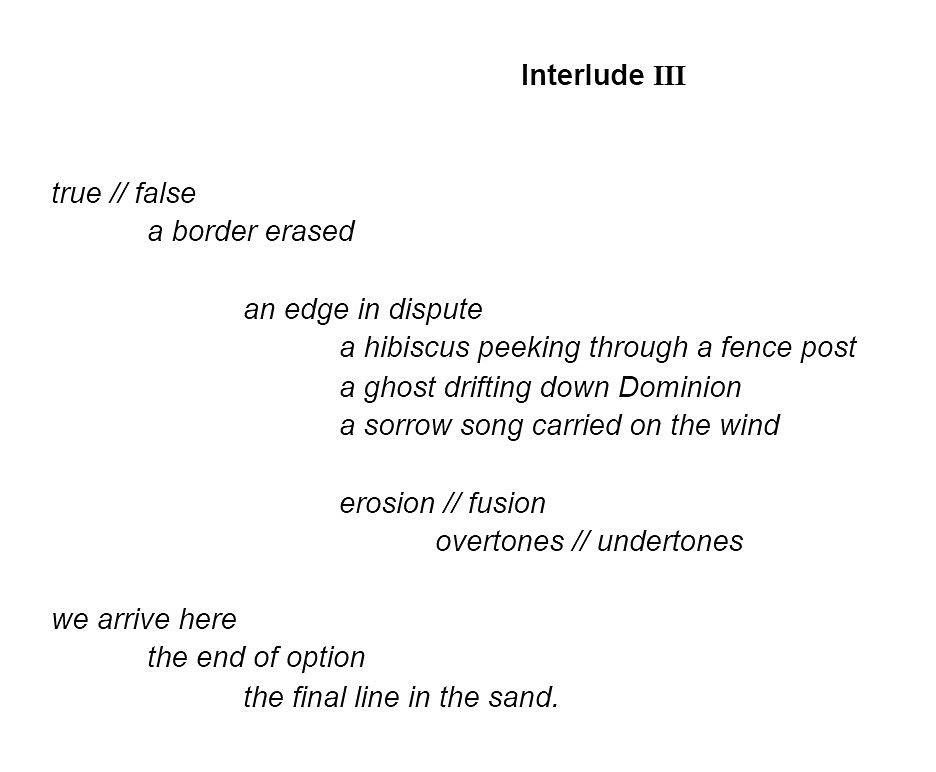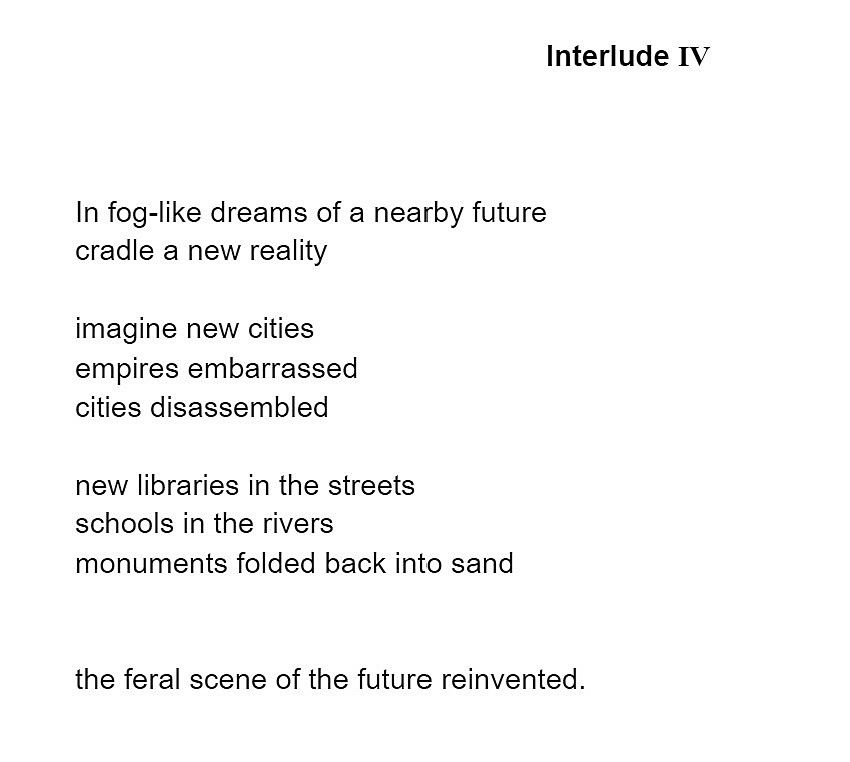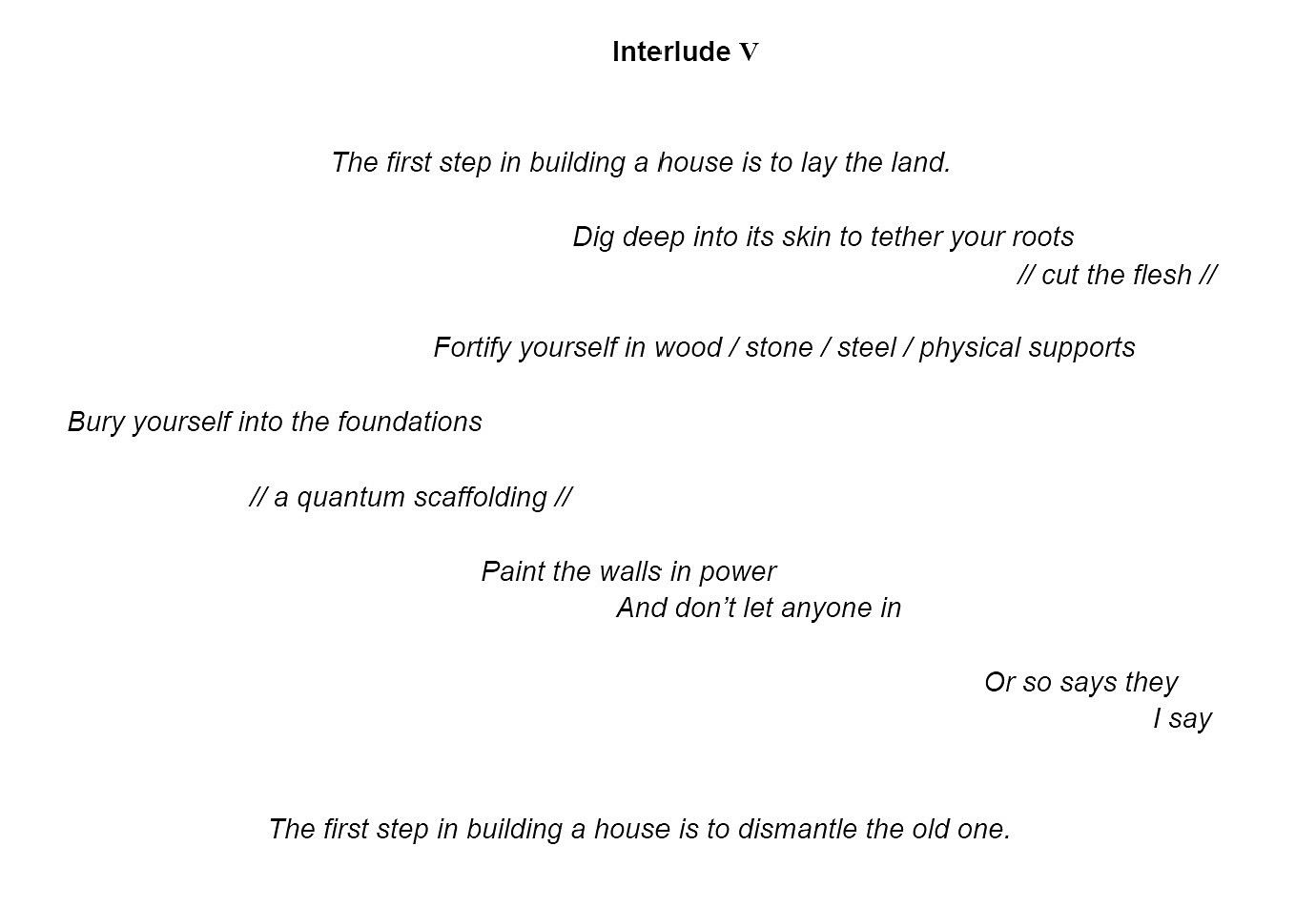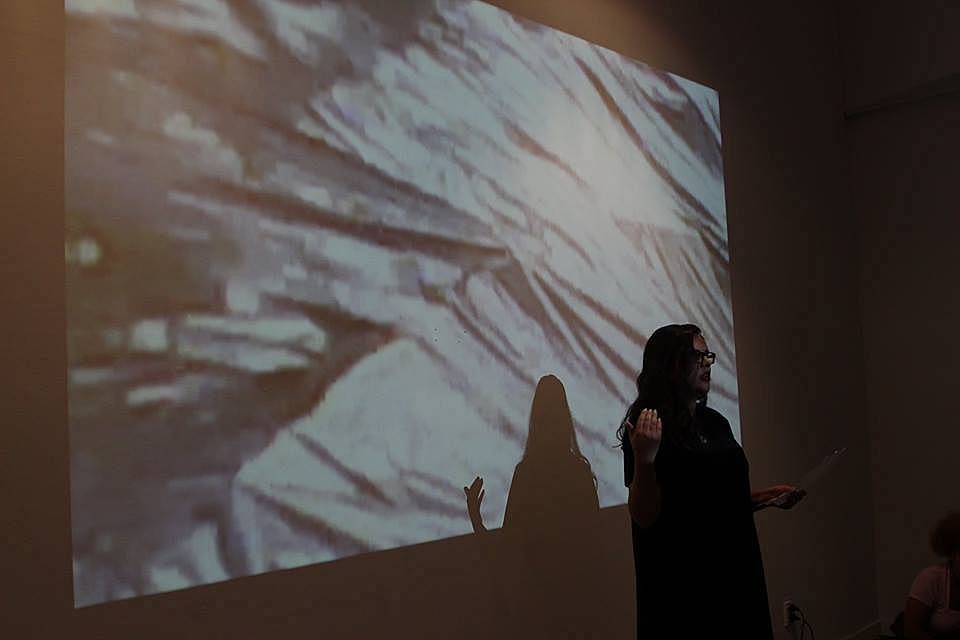The People's Communications Commission Report on Racist Broadcasting
A report on racist broadcasting in New Zealand, prepared by Divyaa Kumar on behalf of the People's Communications Commission, as part of the Gus Fisher x Pantograph Punch Mini Writing Residency.
This piece was written by Divyaa Kumar for the Gus Fisher x Pantograph Punch Mini Writing Residency as part of Gus Fisher’s exhibition The Medium is the Message. During Divyaa’s residency, the gallery audience was asked to submit complaints to a fictional People’s Communications Commission, about media broadcasts that they perceived as in breach of Standard 6 of the Broadcasting Standards of Aotearoa New Zealand.
The People's Communications Commission Report on Racist Broadcasting in New Zealand
Contents:
Context, Purpose and Scope of Review
Interlude Ⅰ
Submissions from the Public
Interlude Ⅱ
Effects on the Public and Freedom of Speech
Interlude Ⅲ
Options for Remediation
Interlude Ⅳ
Summation
Interlude Ⅴ
Context, Purpose and Scope of Review
The purpose of this report by The People’s Communications Commission is to investigate the effectiveness of the Broadcasting Standards of Aotearoa New Zealand, with particular reference to Standard 6. The primary focus of Standard 6, as outlined in the 2016 Free-to-Air Broadcasting Standards and authorised by the Broadcasting Standards Authority, is to regulate the depiction and description of televised content that contains discriminatory or defamatory content. Specifically, it states that:
Broadcasters should not encourage discrimination against, or denigration of, any section of the community on account of sex, sexual orientation, race, age, disability, occupational status or as a consequence of legitimate expression of religion, culture or political belief.
The People’s Communications Commission holds the understanding that while this standard upholds anti-discriminatory behaviours on national television broadcasts, it does not go far enough to ensure consistency in what is deemed ‘anti-discriminatory’ in all areas of broadcast. Standard 6 covers content that is deemed to have encouraged unequal treatment of members of a particular section of a community, to their detriment, and content that is deemed to have devalued the reputation of a community.
Section 6c of this standard declares that it is not intended to prevent the broadcast of material that is “factual or a genuine expression of serious comment”. In tandem, Section 6d declares that the “context must always be considered when assessing whether the broadcast ‘encouraged’ discrimination or denigration”. What the People’s Communications Commission has found is that broadcasts considered ‘factual’ (e.g., news bulletins) are often presented without the wider context or background to the reported information.
Essentially, while the facts detailed in a news broadcast may seem objectively truthful, they provide ample opportunity for misinterpretation by not including context.
This report intends to investigate the way Standard 6 operates and is applied, and its inconsistencies, and to suggest remediation for possible future infringements of this Standard.
Submissions from the Public
The People’s Communications Commission Survey and Submissions Period occurred between 26 August and 26 September 2020, as part of a writing residency hosted by The Pantograph Punch and Gus Fisher Gallery, Auckland, alongside the exhibition The Medium is the Message. Submissions were solicited via an online survey, which was made available and advertised on The Pantograph Punch and Gus Fisher Gallery’s social media platforms; gallery visitors had the opportunity to take the survey after being approached by volunteers. During this period a total of 35 submissions were made through the online survey.
The survey presented submitters with the opportunity to describe any particular broadcast that they believed could or should have been in breach of the broadcasting standards, as outlined in Standard 6. Submitters could name a broadcaster and the channel and/or station on which they viewed or heard this broadcast, and outline the details of the broadcast and how that specific incident could or should have breached the current standards. Submitters had the option to remain anonymous.
Drawn from this pool of submissions and individual posts, a particular set of interconnecting concerns arose, primarily stemming from news broadcasts in relation to Covid-19 developments. Of primary concern were the depictions and descriptions of Chinese and other East Asian ethnic groups, as well as concern about descriptions of Pacific people and their communities, in regard to news broadcasts and/or bulletins presented on television and relayed via dedicated social media platforms.
Of note, particular submissions were concerned with the depiction of Chinese migrants and residents over the period of 15 March to 21 May 2020, and the depiction of Pacific communities during the period of 11 August to 31 August 2020. Both of these periods coincide with the government-imposed lockdown periods for the purpose of community quarantine. The dates and details of the submissions are as follows.
15 March – 21 May 2020
There were 21 submissions during the August–September submissions period concerning the depictions of Chinese and other East Asian peoples in relation to the developing information made available about the Covid-19 pandemic. A thread throughout these submissions was the depiction of Chinese as being the root cause or at fault for the creation and spread of the virus, and ensuing pandemic.
One of the key themes running through these submissions was a questioning of the representation of the ‘fact’ that the pandemic originated in Wuhan, China. Whilst each submission dealt with a different broadcast, the general consensus was that the ways in which this ‘fact’ was discussed in broadcasts put it in such a light that associations and assumptions made about Chinese people were dramatically negative.
The argument made by the majority of these submissions was for more context or explanation in relation to the reporting of this information. At its most base level, the information broadcast was correct but was hyper-simplified by broadcasters and, as such, was made more readily open to misinterpretation, spin and fuelling conspiracy theories.
10 August – 20 September 2020
There were 14 submissions during the August–September submissions period that were concerned with the depictions of Pacific people in relation to the second lockdown period in Auckland. Of particular concern were the negative reports and comments, both in broadcasts and online, of South Auckland, an area of Auckland with a large Pacific population.
Most of the submissions dealt with the proliferation of anti-Pacific rumours and conspiracy theories regarding the re-entry of the virus into the community. Reporting and subsequent broadcasting of these inaccurate beliefs were held up in the submissions as immensely damaging depictions of Pacific people, and of the South Auckland community as whole. (It is noted by the Commission that South Auckland itself is often negatively stereotyped as a high-crime area.)
The argument made by the majority of these submissions was for more consideration of and investigation into sources of potential reported content, and a more considered approach to an incredibly diverse community, as there was no factual basis in these widely circulated myths, other than pre-existing negative and anti-Pacific stereotyping.
Overall, both areas of submission expressed support for more context, consideration and investigation of material that is broadcast, in order to avoid both misinformation being spread, and the negative stereotyping of the discussed communities.
Effects on the Public and Freedom of Speech
The presentation of facts without context leaves them open to misinterpretation – both intentional and unwitting misdirection. For example, a claim made by then National Leader Simon Bridges, that gang members were unlawfully controlling travel checkpoints at various locations around the country during the Level 4 lockdown, was quickly spread amongst television and news broadcasters before it could be properly fact checked. Presenting this information, which is rooted in racist Māori stereotyping, without the context or full information – that gang members were present at checkpoints, but acting as members of communities, rather than representing their individual gangs – makes it very easy for people to come to the agreement that the checkpoints, and therefore Māori- and iwi-led action, were unlawful, despite being approved, and even assisted in some situations, by the Police Commissioner. As the presentation of Bridges’ claim as fact had been without context or deeper cultural understanding, the ‘fact’ was opened up to misinterpretation, racist attack and conspiracy theory.
To quote Meng Foon, New Zealand’s Race Relations Commissioner:
Covid … has brought forward many stereotypes into public discourse, playing on people's fears and phobias – whether it was blaming 'Chinese and Asians' for Covid … speculation about a 'homeless man' enjoying luxury accommodation at the expense of the taxpayer; or xenophobia toward migrants. In each of these situations, the fuller story and facts became irrelevant but a stereotype was reinforced … Left unchecked, these stereotypes can have dangerous results. [x]
Interpreting these claims as facts is not blatantly racist or discriminatory, but can be deemed aggressive on a micro level, regardless of whether or not they are corrected and criticised later. Statements that can be interpreted with such variation can lead to a wider discriminative actions that are far harder to articulate due to their small scale, commonly referred to as microaggressions.
Microaggressions are brief and largely commonplace verbal, behavioural and linguistic indignities, both intentional and unintentional, that communicate hostile, derogatory or otherwise negative attitudes towards culturally marginalised or stigmatised groups. As noted in the submissions, it is largely members of said marginalised groups and communities who have entered complaints regarding microaggressive content in broadcasts.
The primary issue is how detrimental these potential openings for microaggressive behaviours are to the affected communities. Since the end of March, the Human Rights Commission has registered a 30% increase in racially motivated attacks. The proportions of ethnic groups targeted in race-related incidents include:
- 30% Chinese/Asian
- 28% Muslim
- 14% Indian
- 5% Maori/Pacific
The Human Rights Commission notes that, traditionally, Chinese/Asian populations do not submit complaints or report on their negative experiences, due to linguistic and cultural barriers, highlighting this spike as particularly concerning. We are seeing in real time the influence of broadcasting on the general public, and how that influence is manifesting in negative and discriminatory behaviours.
The quandary is how to regulate and deplatform specific discriminatory content, or provide context for the content. Section 6b of the Standard places importance on the freedom of expression, which in this instance includes freedom of speech.
It is important here to define what the People’s Communications Commission understands as freedom of speech – that is, the freedom to say or represent a viewpoint in a certain light, but not the avoidance of the consequences of doing so. In these instances, whilst the broadcasters hold the rights to state facts, freedom of speech does not cover the freedom of punishment from consequences. Here, from the perspective of the PCC, the consequences are bad publicity and public relations for the broadcaster, as well as responsibility for a false and misrepresentative perception of a select community, namely Chinese (nationwide) and Pacific (South Auckland) communities.
The People’s Communications Commission also holds the belief that one of the consequences of sharing a misleading opinion on a subject is that the party who originated, distributed or shared the broadcast content should also be held liable for the outcomes of said broadcast.
In the situation pertaining to this investigation, the news agencies and broadcasters in Aotearoa New Zealand should be held liable for the consequences of misrepresenting Chinese/Asian and Pacific communities, especially when the outcomes can be, and have been, increasingly dramatic and violent.
Options for Remediation
The People’s Communications Commission suggests two possible pathways towards remediation. These suggestions can be implemented independently, but the Commission highly recommends the use of both in tandem to achieve the most comprehensive corrections across broadcasting sectors.
Option 1 – A Change in Televised News Broadcast Depth and Length
The Commission suggests a transition away from the fast-paced model currently employed by television news broadcasters. The time spent covering specific news items should be lengthened, in order to provide proper and comprehensive discussion and representation of the subject.
In doing so, the longer broadcasts would open up avenues to examine issues with more criticality than is currently feasible. The longer time period to discuss, explore and inspect broadcast material ensures a deeper period to unpack and explain the contexts of news information. Parallel to this, broadcasters would allow time, or make space available, for a more investigative style of journalism, in order to best ensure the proper examination of all the relevant and related information.
This should not come at the cost of coverage of other stories: the time of the broadcast as a whole should also lengthen, to allow proper investigation of all the relevant news, leaving no stories underdeveloped and unreported on.
The Commission does not believe that Option 1 should dispense with the ‘highlights’ or use of headlines in the opening segments of popular broadcasts, but should offer more depth, concern and courtesy in the coverage of news stories.
Option 2 – Diversity and Inclusive Employment in Broadcasting Sectors
The second suggestion is to increase employment of underrepresented communities and populations in the areas in which news and broadcast material is handled. The People’s Communications Commission suggests this be a requirement, from entry-level and junior positions within the various broadcasters operating in Aotearoa New Zealand, to the leadership positions of these broadcasters, and to the Government agencies involved with broadcasting, namely the Broadcasting Standards Authority and the office of the Minister of Broadcasting, Communications and Digital Media. Members of underrepresented and marginalised communities working within these realms would help provide internal assistance for the better representation of their communities. This would be evident in terms of what material is considered for broadcast, how that material is handled, edited and presented on television, and how that material is interpreted by its target audience – us, the nation.
Parallel to this, those who do not belong to these marginalised communities, or belong to some and not others, should also work towards acknowledging and reducing the privileges that come from being separate from these spaces, and support the upward movement of the underrepresented. Identifying and mitigating personal bias and privilege is as important as making sure these community members get their foot in the door. It is a two-pronged approach – the labour of these changes cannot rest solely on the shoulders of the already underrepresented.
It is also crucial that when such employment or commission occurs, these community and cultural representatives are supported within their positions and not further marginalised or ostracised from these arenas. Working towards a more comprehensive and lateral understanding of news and communities cannot happen without the critical examination of workplaces, to understand how they can foster possible negative associations. Proper managerial and systematic support, guidance and structure are also crucial to maintain a steady retention in and loyalty to these industries.
It is important to note here that this suggestion is prompted by an anonymous submission to our survey, which noted in relation to a particular broadcast about the respondent’s community that “any negative publicity it’s always ‘South Auckland’ but whenever something good happens it’s just ‘Auckland’.” The respondent suggested that if South Aucklanders were in the room when these subjects were being handled, the chances of this information mismanagement could be mitigated.
Summation
The People's Communications Commission believes that there is evidence of an unacknowledged bias within our national broadcasting system, which stems from a failure to provide wider context for the events being reported, which in turn has led, and could continue to lead, to widespread misinformation and misinterpretation to the detriment of identified communities.
The two suggestions the Commission has for moving towards a more lateral interpretation of news stories are a change in pace of broadcasts, and for the spaces in which broadcasting decisions are made to be more accessible and receptive to criticism and advice from members of marginalised communities.
The People’s Communications Commission would like to see an element of criticality and a desire for improvement from Aotearoa New Zealand broadcasters, so that news and information are not distorted by misinterpretation and stereotyping. We, the Commission and as a country, can only move forward and improve ourselves if we acknowledge that what we currently have can be improved upon.
The Medium is the Message
1 August - 12 December 2020
Gus Fisher Gallery
Feature image: Divyaa Kumar
This piece is presented as part of a partnership with Gus Fisher Gallery, which covers the costs of paying our writers while we retain all editorial control.
